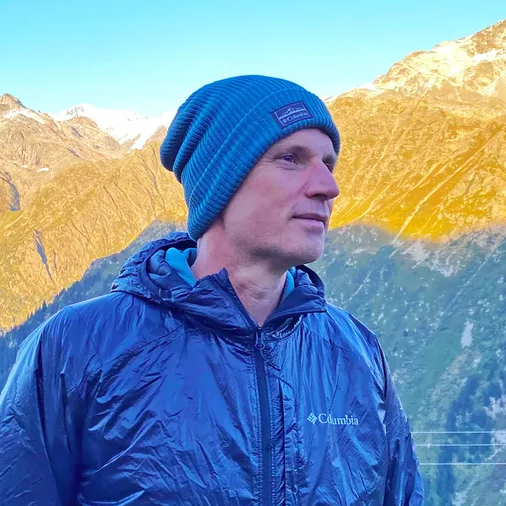What is a wood-burning stove, and should I consider one over a gas option?
What is a wood-burning stove? We answer all and consider a wood-burner's suitability for backpacking and traditional car camping

Don't get us wrong, modern camping stoves are fantastic. However, there's something undeniably delicious about food cooked over roaring flames. After a long day spent exploring the great outdoors, a meal prepared on a wood-burning stove wins time and time again.
So, what is a wood-burning stove? While many people burn wood at a stove at home, most are unaware that modern wood burners also work wonderfully for camping and backpacking trips. After all, starting a fire and using burning wood to prepare a flame-licked feast is an atavistic action that speaks to us from our dim and distant past – it’s something that human communities have done for millennia, one of the few common denominators that unites us as a species, no matter where on the globe we hail from.
Of course, firing up a camping stove is much easier than getting a campfire going. We like to think of the best wood-burning stoves as the happy medium between these two. They're simply worth their weight in gold. Choose the right one, and you can be ready to start brewing a hot drink or cooking up a storm within minutes. And, unlike modern camping stoves that rely on gas or liquid fuel, you can literally collect everything you need from around your campsite, for free, and without having to carry it in.
Meet the experts

Louis has spent over 20 years studying product innovations and environmentally sustainable manufacturing, while enjoying countless camping adventures. When he's not accidentally setting his stoves ablaze – just ask his old MSR Whisperlite – he takes great pleasure in cooking up a wild meal.

As Advnture's consulting editor and a veteran gear tester, what Pat doesn't know about outdoor kit isn't worth knowing. An avid camper, he enjoys both solo wild camping trips and campily breaks under canvas.
Today's best deals
What is a wood-burning stove?
- A wood-burning stove burns biofuel (such as wood) to cook food
- There are wood-burning stoves for every variety of camping trip

Very simply, ‘wood-burning stove’ is the definition used to describe any apparatus that utilizes bio fuels (naturally occurring combustible materials, ranging from wood to dried animal dung) to heat and cook food.
Whether you’re car camping with family and friends, or out on a multiday solo backpacking mission to find some solace in the wilds, there’s a wood-burning stove to fit your camping meal needs.
Wood-burners for backpackers
- Backpackers' wood burners have to be small, lightweight and compact
- They use dry grass, twigs, sticks, small pieces of wood, pine cones or even bits of dried animal dung for fuel
- They're relatively durable as they have very few moving parts

Wood-burning stoves intended for backpacking are small, very lightweight and designed for use with a single pot to feed 1-2 people. These stoves use dry grass, twigs, sticks, small pieces of wood, pine cones or even bits of dried animal dung for fuel.
Constructed from just a few pieces of stainless steel or titanium, these wood-burning stoves are typically built to a very simple design, they’re relatively cheap, and because there are few (if any) moving parts, they are so durable they should last a lifetime – albeit with a bit of discoloration from the flames, every bit of which hints at a story about an outdoor adventure.
It can be tricky to control the temperature on such stoves (you can achieve this by increasing or reducing the amount of fuel you feed it with) but these designs bring water to a boil fast enough to make a brew and rehydrate a freeze-dried meal, and that will keep most hungry hikers satisfied.
All the latest inspiration, tips and guides to help you plan your next Advnture!
And then, once cooled and stowed away in a small stuff sack, there’s little that can go wrong with wood-burning backpacking stoves.
Wood-burners for car campers
- Where car camping is concerned, size and weight are less of a worry
- Larger wood-burning stoves can cater for large groups at the campsite
- They're a more efficient, safer and cleaner method of cooking than over the campfire
- Once the cooking is done, they double up as your campfire for the night

The other style of wood-burning stove is designed for feeding larger groups, in locations where the stove can be transported to the campsite, park or beach by vehicle (check out our guide to the pros and cons of camper vans vs tents), so size and weight is much less of a worry.
Offered as a cleaner, safer and quicker alternative to cooking over a campfire, these models have features better suited for grilling meat and/or vegetables over flames, and cooking for friends.
Typically constructed of sturdy and durable stainless steel, most large wood-burning stoves are heavy beasts. With larger capacity for fuel and grill surfaces, it’s easier to cook and entertain around such stoves. The trade-off for increased weight is a stove that burns big bits of wood very efficiently, and after dinner they continue to operate as a firepit, so you can sit around chatting or staring mesmerized at the dancing, flickering flames.
Another benefit is flexibility on the location of your campfire. Although a bit heavy to haul, larger stoves work on the beach, next to a river, in a national park or even a backyard. Since the stoves are self-contained, there’s little impact on the natural environment – but obviously it is vital you check local restrictions and any emergency measures that might be in place because of extreme conditions and increased risk of wildfires.
A journalist specializing in outdoor recreation, Lou has covered product design innovations, participation trends and environmentally sustainable manufacturing for over 20 years. On the other hand, he’s had some less than successful outdoor adventures: once, completely spent after a hard day on the trail, he managed to set a vintage MSR Whisperlite stove ablaze before accidentally kicking the burning contraption into a lake. A published author, his book about invasive fish threatening the Great Lakes watershed will be published in 2021. craftedwords.com
